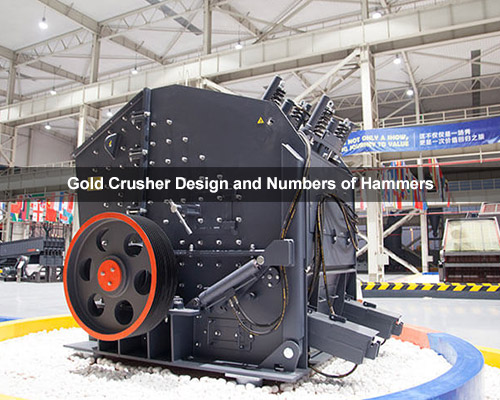Gold Crusher Design and Numbers of Hammers
Gold crusher is essential equipment in the mining industry, designed to break down gold-bearing ores into smaller particles for further processing. Among the various types of crusher, hammer mills are widely used due to their efficiency and versatility. A key aspect of hammer mill design is the number of hammers, which significantly impacts crushing performance, energy consumption, and overall gold recovery rates. In this article, we’ll explore the fundamentals of gold crusher design and delve into why the number of hammers matters, providing insights for optimizing your gold mining operations.
Understanding Gold Crusher Design
Gold crusher, particularly hammer mills, consist of a rotating shaft with multiple hammers that strike and shatter ore against hard surfaces. The design focuses on maximizing impact force while minimizing wear and tear. Key components include the rotor, hammers, screen, and housing. For gold ore, which is often hard and abrasive, crusher must be robust and tailored to handle specific ore characteristics. Factors like hammer material (e.g., high-chromium steel for durability), rotor speed, and feed size play crucial roles in ensuring efficient crushing and higher gold yields.
The Importance of Hammer Numbers in Gold Crusher
The number of hammers in a gold crusher directly influences its crushing efficiency and operational costs. More hammers generally provide finer particle size and better ore liberation, which is critical for gold extraction processes like cyanidation or gravity separation. However, increasing hammer count can also lead to higher energy consumption and maintenance needs. Typically, hammer mills for gold ore feature between 4 to 16 hammers, depending on the mill size and application. For instance, smaller operations might use fewer hammers for cost-effectiveness, while large-scale mines opt for more hammers to achieve higher throughput and consistent output quality.
Factors Affecting the Optimal Number of Hammers
When designing a gold crusher, several factors determine the ideal number of hammers. These include:
- Ore Hardness and Abrasiveness: Harder ores may require more hammers to achieve effective fragmentation without excessive wear.
- Desired Particle Size: Finer crushing for improved gold recovery often necessitates a higher hammer count.
- Throughput Requirements: Higher production rates might call for additional hammers to maintain efficiency.
- Energy Efficiency: Balancing hammer numbers with power consumption is vital to reduce operational costs.
- Maintenance and Lifespan: More hammers can increase maintenance frequency, so designs must account for easy replacement and durability.
By carefully evaluating these aspects, miners can select or customize a hammer mill that optimizes gold recovery while minimizing downtime and expenses.
Best Practices for Gold Crusher Design and Hammer Selection
To maximize the effectiveness of a gold crusher, follow these best practices:
- Conduct Ore Testing: Analyze the gold ore’s properties to determine the optimal hammer count and design specifications.
- Choose High-Quality Materials: Use hardened steel hammers to resist abrasion and extend service life.
- Monitor Performance: Regularly assess crushing efficiency and adjust hammer numbers or configurations as needed.
- Integrate with Processing Systems: Ensure the crusher design complements other gold recovery methods for a seamless operation.
Implementing these strategies can lead to significant improvements in gold extraction rates and overall mining profitability.
In summary, the design of a gold crusher, particularly the number of hammers in a hammer mill, is a critical factor in efficient gold ore processing. By understanding how hammer count affects crushing performance, energy use, and maintenance, mining operations can make informed decisions to enhance gold recovery. Whether you’re involved in small-scale artisanal mining or large industrial projects, optimizing hammer numbers based on ore characteristics and operational goals is key to success. As technology advances, continued focus on crusher design innovations will further drive efficiency in the gold mining industry.

